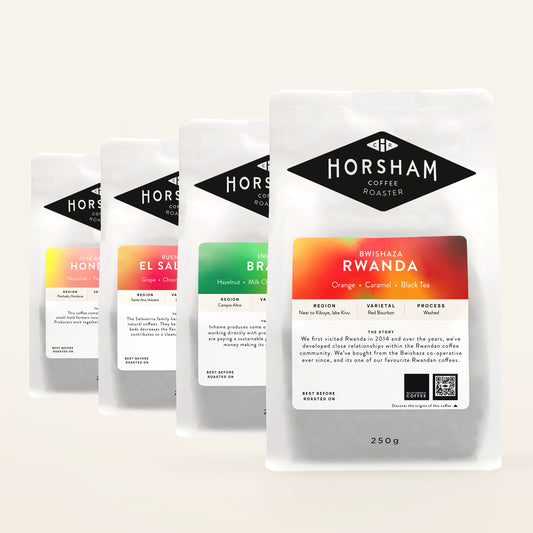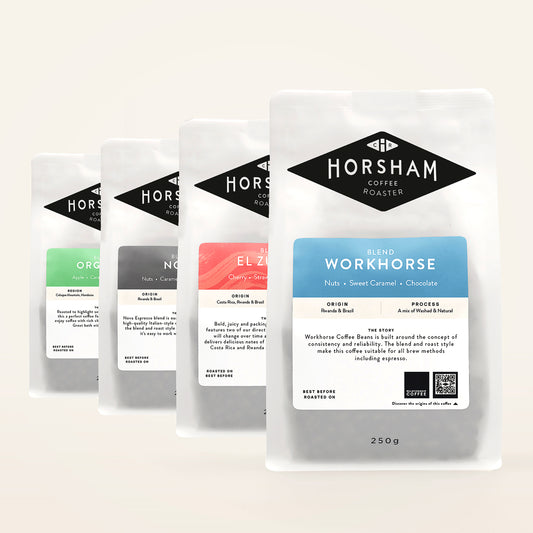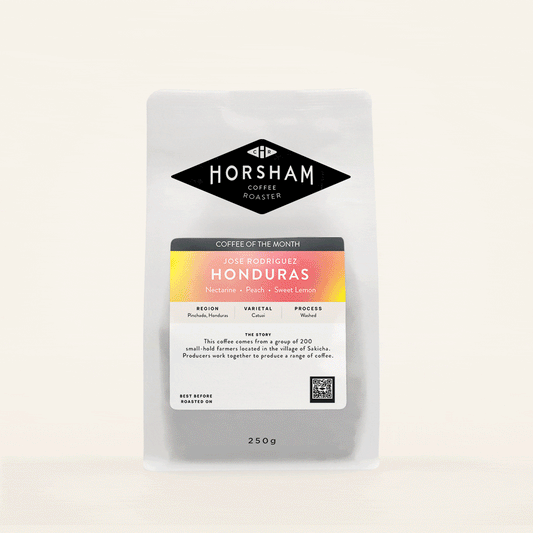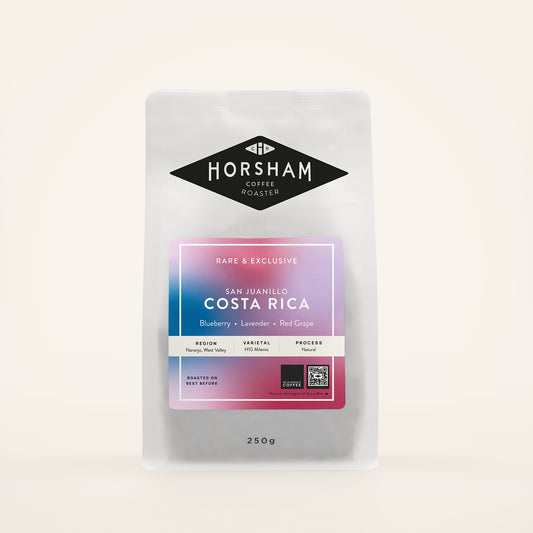
COFFEE FROM
Ecuador
Speciality coffee from Ecuador is quite rare to find, with just a small amount produced and exported compared to neighbouring countries. We are pleased to be able to feature a fantastic coffee from a small farm in Ecuador.

Overview
Coffee was first introduced to Ecuador in the early 1860s, with commercial cultivation beginning in the Manabí province, a region that remains central to the country’s coffee production today. The industry expanded steadily through the late 19th and early 20th centuries, especially after the cocoa crisis in the 1930s, when coffee exports began to play a more significant economic role. By the 1970s, coffee had become one of Ecuador’s top export crops, with exports peaking in the mid-1970s and 1980s. However, the global coffee crisis of the 1980s and 1990s, marked by plummeting international prices and increased competition from other countries, led to a sharp decline in production and exports, causing many farmers to abandon coffee for more profitable crops. In recent years, Ecuador’s coffee sector has experienced a revival, with a new focus on quality, specialty varieties, and sustainable practices, helping Ecuadorian coffee gain recognition among global coffee enthusiasts.

Processing Methods
Ecuador employs a diverse range of coffee processing methods, reflecting both its traditional practices and the influence of global specialty coffee trends. The main processing methods used in Ecuador include:
Washed Process
- The washed process is the most common and traditional method in Ecuador, especially for specialty coffees. In this method, the coffee cherries are pulped to remove the outer skin and mucilage, then fermented in water, washed, and finally dried. This process is known for producing clean, bright, and complex coffees.
Natural Process
- The natural process, locally referred to as "bola" coffee, involves drying the whole coffee cherry in the sun before removing the dried fruit and parchment. This method is less common than washed but is gaining popularity, especially in regions like Loja. Natural processing tends to produce coffees with heavier body, pronounced sweetness, and complex fruit notes.
Honey Process
- Honey processing, which is a hybrid between washed and natural methods, is also emerging in Ecuador. In this method, some of the mucilage is left on the bean during drying, resulting in coffees that balance the clarity of washed coffees with the sweetness and body of naturals.
Anaerobic Fermentation
- Some innovative producers are experimenting with anaerobic fermentation, where coffee cherries or pulped beans are fermented in sealed, oxygen-free environments. This method can create unique and intense flavour profiles.

Flavour Profiles
Flavour profiles are diverse and varied and will depend on the varietal and chosen processing method. Washed coffee have the potential to be clean and vibrant with excellent character similar to great coffees from Colombia. The natural and alternative processing methods can produce fruity coffees with distinctive tasting notes.
Explore Recommended Coffee
-
Horsham Coffee Roaster
Coffee of the Month Subscription
Regular price From £10.25Regular priceUnit price / per -
 10% OFFHorsham Coffee Roaster
10% OFFHorsham Coffee RoasterSingle Origin Coffee Selection
Regular price £36.22Regular priceUnit price / per£40.25Sale price £36.22Sale -
 10% OFFHorsham Coffee Roaster
10% OFFHorsham Coffee RoasterBlend Selection
Regular price £31.05Regular priceUnit price / per£34.50Sale price £31.05Sale -
Blueberry | Lavender | Red Grape
San Juanillo H10 Natural Costa Rica | Natural
Regular price From £15.75Regular priceUnit price / per



